
Building a home recording studio can be as exciting as it is daunting, especially for beginners. With an array of equipment choices and technical considerations, it's easy to feel overwhelmed. But that's why we're here! To demystify the process, so you can focus solely on the essential music recording equipment needed when creating your first studio. From understanding the importance of starting simple and budgeting wisely, to delving into the specifics of each piece of equipment, this article provides you with the knowledge to build a functional and inspiring space for your musical creations.
A Simple Home Studio Setup
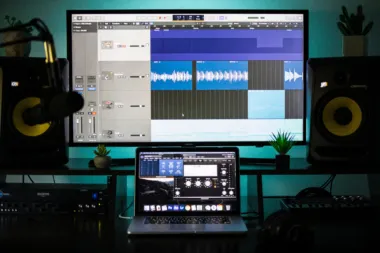
Starting with a simple home studio setup is not just feasible, it's highly recommended for beginners in the music recording arena. The journey of building a recording studio is akin to learning a new instrument - starting with the basics yields the best long-term results. Overloading yourself with complex equipment and software from the get-go can lead to frustration and burnout. Instead, investing in essential music recording equipment for beginners allows you to grasp the fundamentals and develop your skills progressively. As you grow more comfortable and proficient, you can gradually enhance your simple home studio setup, with something more advanced. Replacing and adding items as you need them. This approach ensures a solid foundation and a sustainable growth path in your musical journey.
Home Recording Studio Budget

When embarking on building a home recording studio, budgeting is a crucial aspect, especially for beginners seeking music recording equipment. The good news is, an effective studio can be created on a very modest home recording studio budget. It's essential to balance cost with quality to avoid the pitfalls of overly cheap equipment, which can be inadequate and potentially impede your recording experience.
The question arises: What's a realistic home recording studio budget? For music recording equipment for beginners, a basic yet functional studio can range from $500 to $3500. This home studio budget allows for purchasing essential items from a small studio equipment list, such as a decent audio interface, a quality microphone, and a pair of studio monitors, along with necessary cables and stands.
A breakdown of costs might look like this: an audio interface for $100-$200, a condenser microphone for $100-$300, and studio monitors for $200-$500. Adding essential accessories like cables and stands, your initial investment could be around $450-$1100. Including a digital audio workstation (DAW) and some essential plugins, the total may reach approximately $700-$1500. If a new computer is required, the higher end of a home studio budget range may be more realistic.
In conclusion, while it's certainly possible to set everything up with a small home recording studio budget, investing in quality, even at a basic level, is key. This approach ensures a solid foundation for your studio, allowing for future upgrades as your skills and needs grow. The aim is to start with the essentials and expand thoughtfully, making each addition to your small studio equipment list a step towards enhancing your recording capabilities.
Home Studio Key Considerations
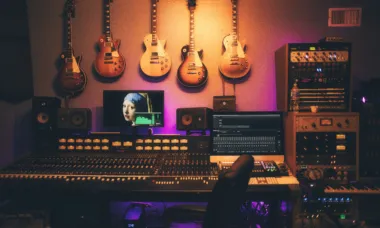
In building a home recording studio, it's not just about choosing the right music recording equipment. Key considerations such as equipment quality, room acoustics, power, and comfort play a vital role in the overall success of your studio. This section delves into these crucial aspects, providing essential insights to help beginners create an effective and enjoyable recording environment.
1. Equipment
Selecting the right equipment is the first crucial step in building a home studio. For beginners, the focus should be on acquiring basic but reliable music recording equipment. This includes a good quality audio interface, a durable microphone, and studio monitors with clear sound reproduction. It's important to start with a small studio equipment list and gradually expand it. This approach not only makes the initial investment manageable but also allows for learning and adapting to each piece of equipment, ensuring a solid understanding of its functionality and importance in the recording process.
2. Room Acoustics
Acoustics play a pivotal role in the quality of recorded sound. Beginners should prioritize creating an acoustically balanced space, which can be achieved with simple modifications. Adding acoustic panels to walls helps absorb excessive reverberation, while bass traps in corners reduce low-frequency build-up. Ensuring that the room is as sonically neutral as possible will greatly enhance the fidelity of recordings. While professional acoustic treatment can be expensive, there are budget-friendly DIY options that can significantly improve the sound quality of your home studio, making it an essential part of your music recording equipment for beginners.
3. Power and Networking
Adequate power supply and efficient networking are essential for a functional home studio. Ensure your studio has enough electrical outlets to power all your equipment without overloading any circuits. Surge protectors are a must to safeguard your gear from power surges. Networking is also crucial, especially in today's digital age. A reliable internet connection is necessary for downloading software updates, accessing online resources, and collaborating with other musicians remotely. Wired connections typically offer more stability and faster speeds compared to wireless, making them a preferred choice for a home studio setup.
4. Comfort
In your home studio, comfort is essential for productivity and creativity. An ergonomic chair that supports long hours of work, adequate lighting to reduce eye strain, and a well-organized space can significantly impact your recording experience. The layout of your equipment should allow for easy accessibility and movement. Temperature control and ventilation are also important to maintain a comfortable environment. Remember, you’ll be spending a lot of time in your studio, so investing in its comfort is as important as investing in quality music recording equipment for beginners.
5. Privacy
Privacy in your home studio is essential for focus and creativity. It’s important to have a space where you can work without interruptions or outside noise. Soundproofing can help to keep external sounds out and your music in, which is especially important if you live in a noisy area or have a family. Simple soundproofing techniques like sealing gaps around doors and windows and using heavy curtains can make a significant difference. Privacy also extends to digital security; ensure that your work is backed up and protected from unauthorized access.
6. Security and Accessibility
Securing your home studio is crucial to protect your investment in music recording equipment for beginners. Use locks for doors and windows, and consider an alarm system or camera for added security. Insurance is also advisable to cover your gear against theft or damage. In terms of accessibility, think about how easy it is to access your studio, especially if you plan to collaborate with other musicians. Ensure that your studio is comfortably reachable and equipped to accommodate others if needed. Also, consider the ergonomic layout of your equipment for ease of use during long recording sessions.
Essential Small Studio Equipment List
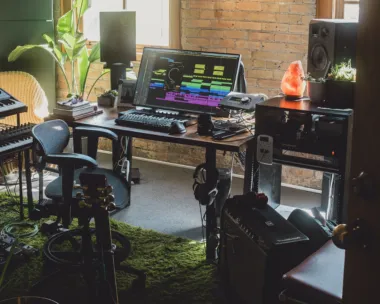
Creating a functional and efficient home studio requires careful selection of equipment. Each item in your studio, from the desk and chair to the audio interface and DAW software, plays a specific role in your music production journey. This section will explore each essential piece of equipment in detail, discussing their purpose, whether they are optional or essential, and how to use them effectively. Understanding these aspects is crucial for beginners setting up their first home studio, ensuring a seamless and productive recording experience.
1. A Desk and Chair
The foundation of any home studio is a sturdy desk and a comfortable chair. The desk should be spacious enough to accommodate your computer, audio interface, monitors, and other essential gear. It should also be sturdy enough to support the weight of this equipment. Cable management features are a plus, helping to keep your workspace tidy and organized.
A comfortable chair is equally important, as you'll spend many hours sitting while recording and mixing. Look for an ergonomic design that supports your back and allows for adjustments to fit your body. A chair with adjustable height and armrests will help in maintaining a good posture, reducing the risk of discomfort or strain during long sessions.
While the desk and chair may not directly affect the sound quality of your recordings, they play a critical role in your productivity and comfort. Investing in a high-quality desk and chair can significantly improve your studio experience, making it a worthwhile addition to your small studio equipment list.
2. A Computer
A reliable computer is the heart of your home studio setup. For music recording, a computer with a powerful processor, sufficient RAM, and ample storage space is essential. Laptops are preferred by many for their portability, allowing you to work from different locations or collaborate with others outside your studio.
When choosing a computer, consider the requirements of your DAW software and any plugins or virtual instruments you plan to use. These applications can be resource-intensive, so a computer with a fast processor and plenty of RAM is crucial to avoid latency and ensure smooth operation. Additionally, consider the compatibility of your computer with other studio equipment like audio interfaces and MIDI controllers.
Regular maintenance, including software updates and backups, is vital to keep your computer running efficiently. A well-maintained computer ensures that your recording sessions run smoothly without technical interruptions, making it an indispensable part of your music recording equipment for beginners.
3. Digital Audio Workstation (DAW)
A Digital Audio Workstation, or DAW for short, is the software where all the magic happens in a home studio. It allows you to record, edit, mix, and master your music. Choosing the right DAW is crucial as it forms the core of your music production workflow.
There are many DAWs available, each with its unique features and workflow. Some popular options for beginners include Ableton Live, FL Studio, and GarageBand. When selecting a DAW, consider its user interface, compatibility with your computer, and the types of music you want to produce. Many DAWs offer a range of built-in instruments, effects, and samples, which are great for starters.
Learning to use a DAW can take time, but most software comes with tutorials and a supportive user community. Regular updates and expansions keep the DAW current and add new features. While some DAWs can be expensive, there are also free or budget-friendly options that are quite capable, making them a vital part of your small studio equipment list.
If you're not sure which DAW to go with, make sure to read our comparison of the 2 leading DAW, Ableton and FL Studio.
4. Plugins, Samples, Virtual Instruments
Plugins, virtual instruments, and sample libraries, are essential components that enhance the capabilities of your DAW.
- Plugins: Add these to your DAW for additional effects, such as reverb, compression, and EQ, which are crucial for shaping and refining your sound.
- Virtual Instruments: These provide a vast array of sounds, from synthesizers to orchestral sounds, enabling you to create diverse musical compositions.
- Sample Library: This is a collection of pre-recorded sounds that can be imported in your DAW and used in your compositions. They offer diverse sounds from different genres, and can be accessed via a number of cloud-based platforms.
Starting with a basic set of plugins and a few versatile virtual instruments is advisable at first. This not only keeps your initial costs down but also allows you to learn and master each tool effectively. As you grow more experienced, you can expand your collection to include more specialized plugins and instruments.
It's important to note that while some plugins, samples and instruments can be expensive, there are many high-quality free options available. Regular updates and maintenance are essential to ensure compatibility with your DAW and operating system. Integrating these tools into your workflow can significantly expand your creative possibilities, making them a key part of your music recording equipment for beginners.
If you're not sure which sample libraries or virtual instruments to start with, make sure to read our articles on the 10 best sample libraries, as well as our comprehensive reviews of Splice and Loopcloud.
5. Audio Interface
The audio interface is a critical component of your home studio. It serves as the bridge between your analog equipment (like microphones and instruments) and your digital setup (the computer and DAW). A good audio interface should provide high-quality analog-to-digital conversion, low-latency monitoring, and enough inputs and outputs for your current and future needs.
For beginners, a simple, user-friendly interface with a couple of microphone preamps and line inputs is usually sufficient. As you expand your studio and work with more instruments or microphones, you might need an interface with more connectivity options. The choice of an audio interface also depends on the type of computer you use, as compatibility is key for a seamless connection.
Regular firmware updates and proper cable management are important for maintaining the audio interface. Quality interfaces can last many years, making them a worthwhile investment for your small studio equipment list. A reliable audio interface ensures that your recordings are captured with clarity and precision, making it an essential component of music recording equipment for beginners.
Some popular Audio Interfaces to consider include:
6. MIDI Controller (optional)
A MIDI controller is an invaluable tool in a modern home studio. It allows you to input MIDI data into your DAW, controlling virtual instruments and software synthesizers. While not mandatory, a MIDI controller greatly enhances your ability to compose and arrange music, especially if you're working with electronic or synthesized sounds.
MIDI controllers come in various forms, including keyboards, drum pads, and control surfaces. For a beginner, a simple keyboard with a few octaves and some basic controls like pitch bend and modulation wheels is a good start. This allows for a hands-on approach to music creation, making it easier to input notes and control dynamics.
When selecting a MIDI controller, consider its compatibility with your DAW and the types of music you plan to produce. Most controllers are plug-and-play and require minimal maintenance, but keeping the firmware updated ensures optimal performance. Integrating a MIDI controller into your setup adds flexibility and creativity to your music production process, making it a valuable addition to your small studio equipment list.
We highly recommend MIDI Pad and Keyboard controllers. They offer a wide variety of options, from beginner to advanced, and at very reasonable prices.
7. Microphones and Instruments
Microphones are essential for capturing the sound of your instruments and vocals with clarity and detail. The choice of microphone depends on what you plan to record. For vocal recordings, a large-diaphragm condenser microphone is often preferred due to its sensitivity and wide frequency response. For instruments like guitars or drums, dynamic microphones are commonly used for their durability and ability to handle high sound pressure levels.
For a beginner's home studio, starting with one or two versatile microphones that can handle a range of recording situations is a practical approach. As you gain more experience and expand your recording needs, you can add more specialized microphones to your collection.
Regular maintenance, such as cleaning and safely storing your microphones, will prolong their lifespan. It's also important to use the correct microphone techniques and placements to capture the best sound quality. Good quality microphones are a crucial part of your music recording equipment for beginners, as they significantly impact the fidelity of your recordings.
8. Microphone Stands
Microphone stands provide the necessary support for your microphones, allowing for optimal placement and stability during recording sessions. The right stand can make a significant difference in capturing the best sound quality, especially when recording vocals or acoustic instruments.
You'll need a few sturdy and adjustable stands to get started. Boom stands offer versatility, allowing you to position microphones above or around instruments and amplifiers easily. Straight stands, on the other hand, are suitable for vocal recordings and can be used with a pop filter.
While microphone stands may seem like a simple part of your small studio equipment list, they play a crucial role in the recording process. Proper placement using a reliable stand can greatly enhance the quality of your recordings, making them an indispensable item in your music recording equipment for beginners.
9. Pop Filters
While a pop filter may seem unnecessary, it is absolutely essential for any vocalis, to ensure your vocal recordings are clear and free from distracting noises. It serves to minimize plosives - the burst of air produced by sounds like 'p' and 'b' - which can cause unwanted spikes and distortion in your recordings. By filtering out these harsh plosive sounds, a pop filter helps to produce clear, professional-quality vocal tracks.
Pop filters are typically made of nylon or metal and are placed between the vocalist and the microphone. They are not only functional but also protect the microphone from moisture and saliva, which can damage sensitive components over time.
They're generally affordable and can have a significant impact on the quality of vocal recordings. While some microphones come with built-in pop filters, an external one often provides better plosive reduction and can be positioned more flexibly.
10. A Bunch of Cables
XLR cables are the standard for connecting microphones and other professional audio equipment to your audio interface or mixer. High-quality XLR cables are crucial for ensuring a clear, noise-free signal path between your gear. Cheap or poorly made cables can introduce noise, hum, or even cause signal loss, negatively impacting your recording quality.
For beginners, investing in a few good quality XLR cables of various lengths is advisable. This allows for flexibility in your studio setup and ensures you have the right cable for any situation. Look for cables with durable connectors and robust shielding to minimize interference and ensure a long lifespan.
Regularly inspecting and properly storing your XLR cables will help prevent damage and maintain their performance. Winding cables correctly and avoiding sharp bends will extend their life and ensure reliable performance. While they might seem like a small part of your studio, XLR cables play a vital role in the signal chain, making them an essential item on your small studio equipment list.
11. Closed-Back Headphones (to Monitor Your Playing)
Closed-back headphones are essential for monitoring your playing and mixing in a home studio. They provide isolation from external noise, allowing you to focus on the sound without distractions. This is especially important in environments where acoustics are not ideal or when recording in the same room as your computer and other noise-producing equipment.
For beginners, a pair of comfortable, durable closed-back headphones with good sound quality is a wise investment. They should provide a flat, accurate response for critical listening and mixing decisions. Comfort is also important, as you'll likely be wearing them for extended periods.
Regular cleaning and careful handling will extend the life of your headphones. Store them properly when not in use to avoid damage. While some might opt for open-back headphones for mixing, closed-back headphones are more versatile for recording and general use, making them a key piece of music recording equipment for beginners.
Options we highly recommend for beginner home studio headphones include:
12. Studio Monitors (to Hear Your Mixes)
Studio monitors are essential for an accurate auditory representation of your mixes. Unlike consumer speakers that often enhance certain frequencies, studio monitors provide a flat response, giving you a true picture of your sound. This accuracy is crucial for making informed mixing decisions and producing a sound that translates well across various listening environments.
For beginners, investing in a pair of quality studio monitors is a wise decision. They don't have to be the most expensive, but they should offer clarity and an honest representation of your audio. Placement is also key; ideally, they should be positioned at ear level and angled towards you to create an equilateral triangle with your listening position.
If you don't want tinnitus when you're older, be careful not to make the mistake many musicians make, and always manage the volume in your studio to avoid damaging the speakers or your hearing. While studio monitors are essential for mixing and mastering, they are also beneficial for general listening, providing a clear and accurate sound that can help improve your overall production skills. Including studio monitors in your small studio equipment list is a fundamental step in setting up a capable home recording environment.
Options we highly recommend for beginner home studio monitors include:
Home Studio Final Considerations
Each piece of equipment in your new home studio, from the desk and chair to the pop filter, plays a role in creating a space that is both functional and conducive to creativity. The journey of assembling your studio is an ongoing process, evolving with your skills and needs. Don't be afraid to start with the basics and expand as you grow more comfortable and proficient in your recording abilities. The most important aspect is to create a space where you feel inspired and capable of producing your best work. As you gather your music recording equipment for beginners, keep in mind that each item is a step towards realizing your musical ambitions. Remember, the best studio is not always the one with the most equipment, but the one where every piece serves a purpose in your creative process.



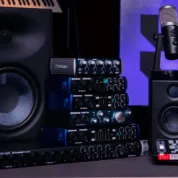


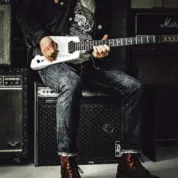
Leave a Reply!